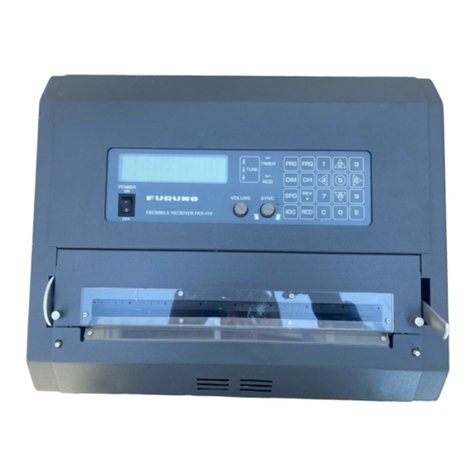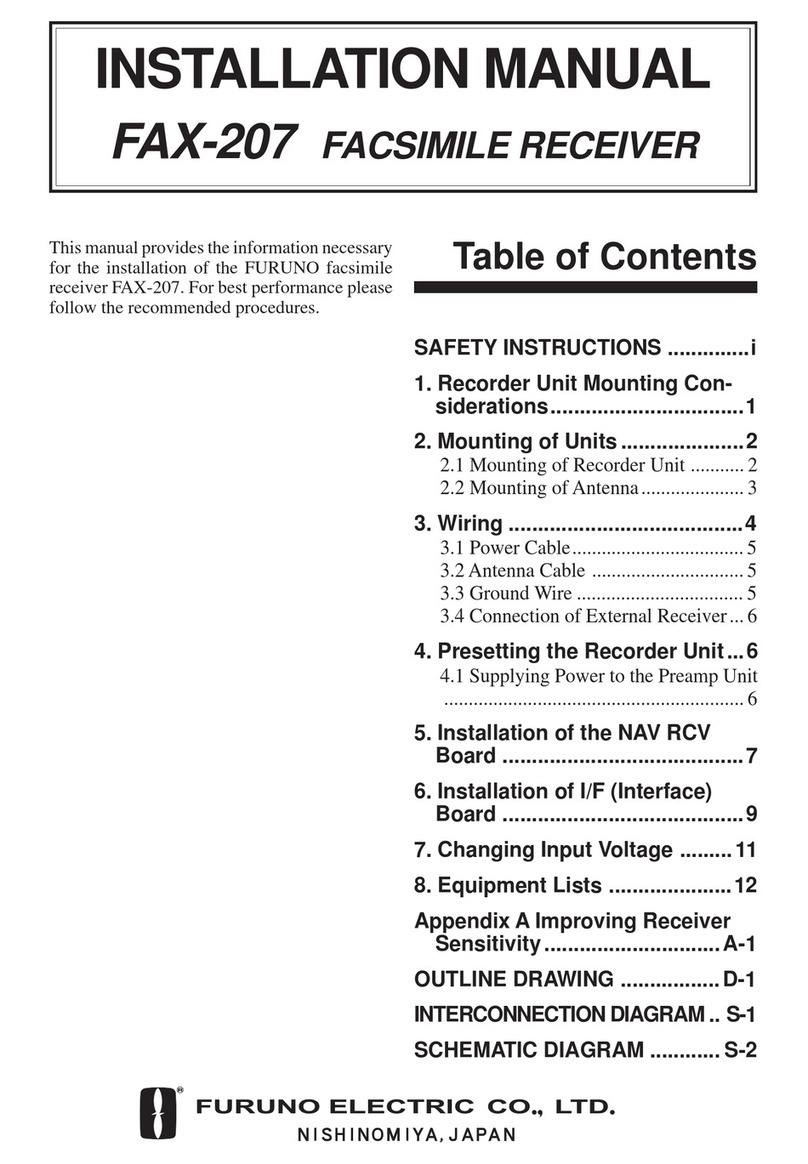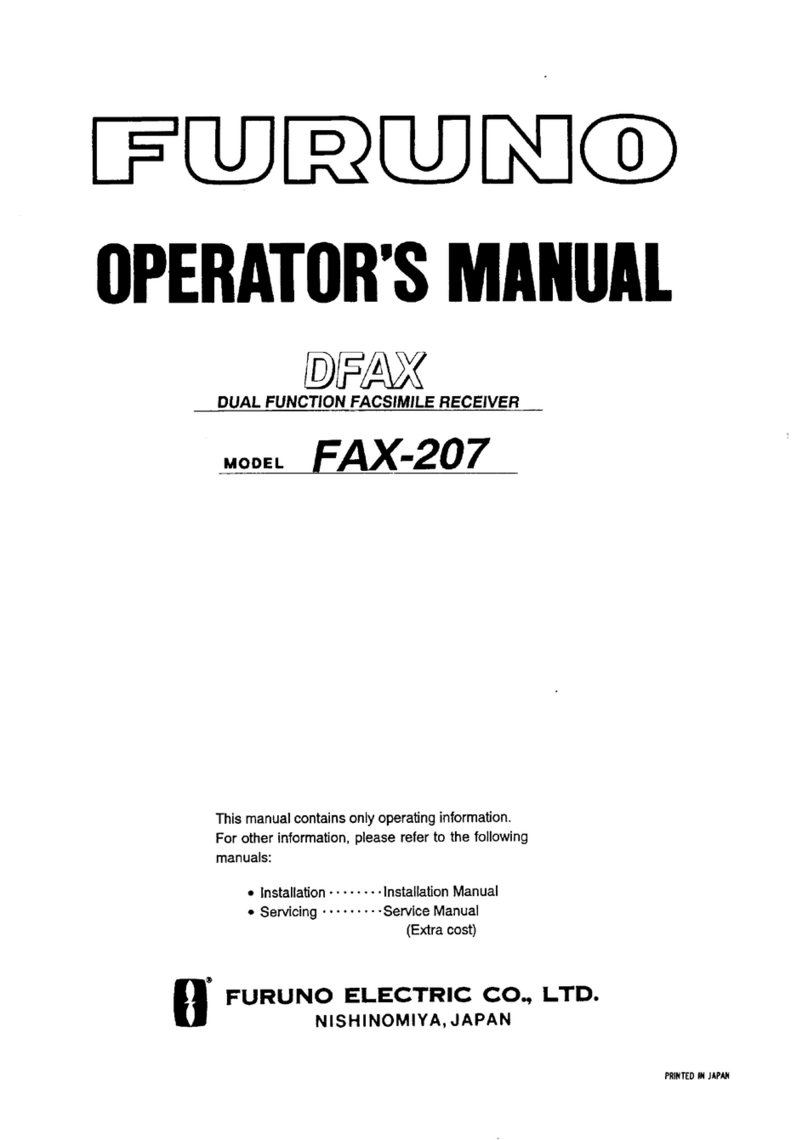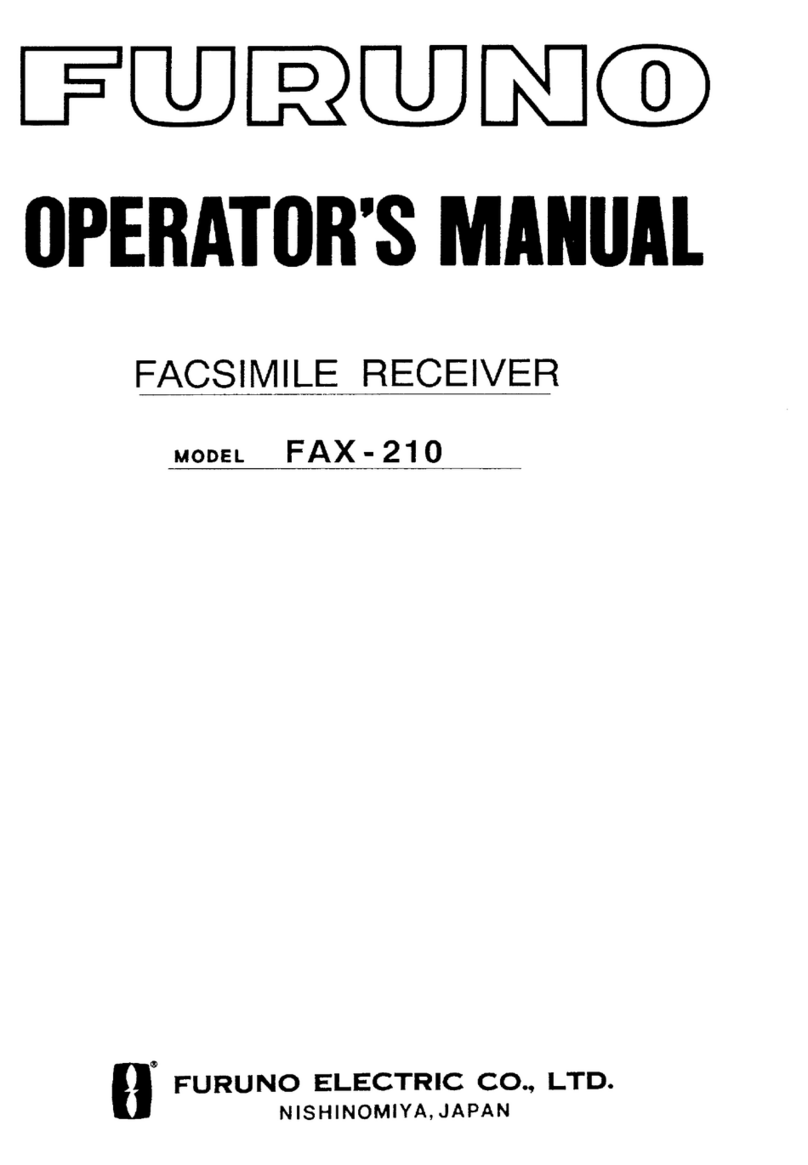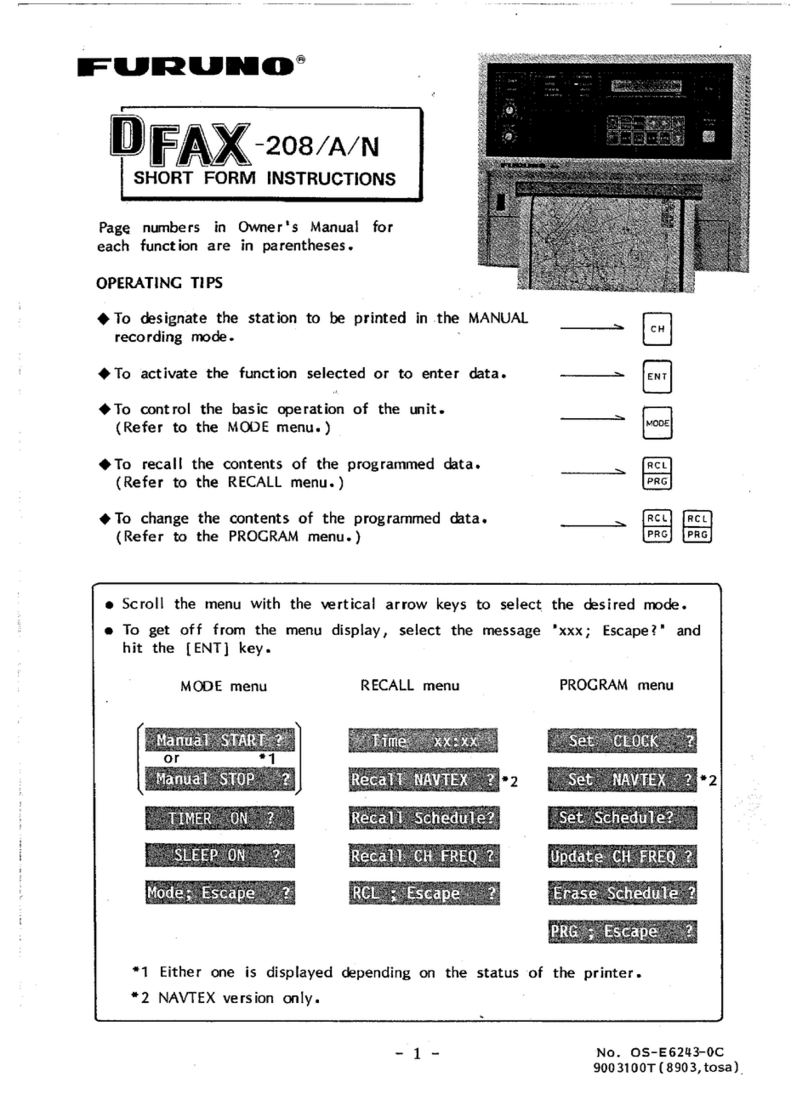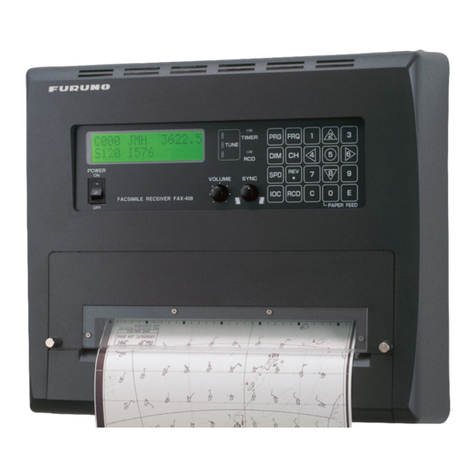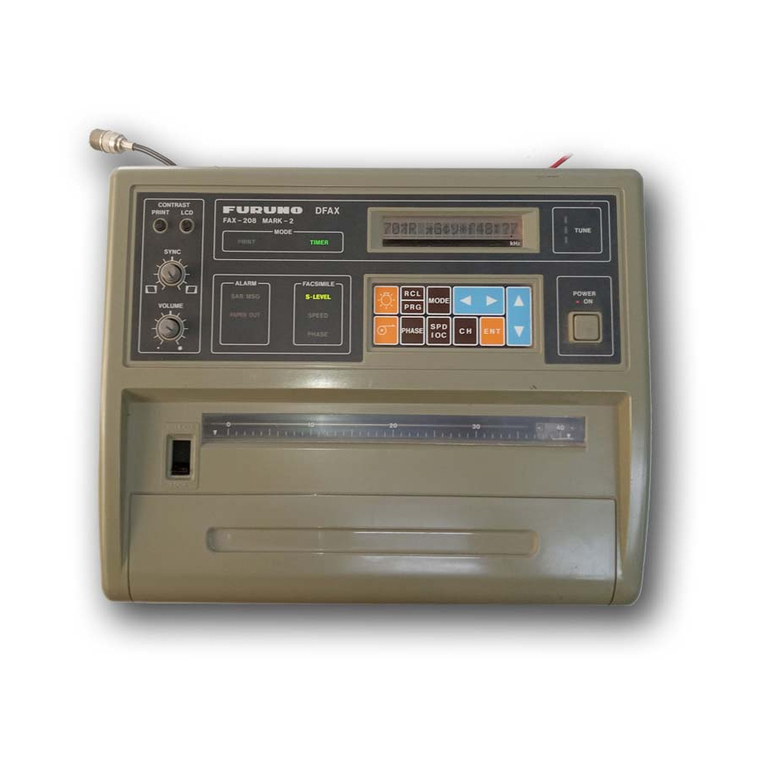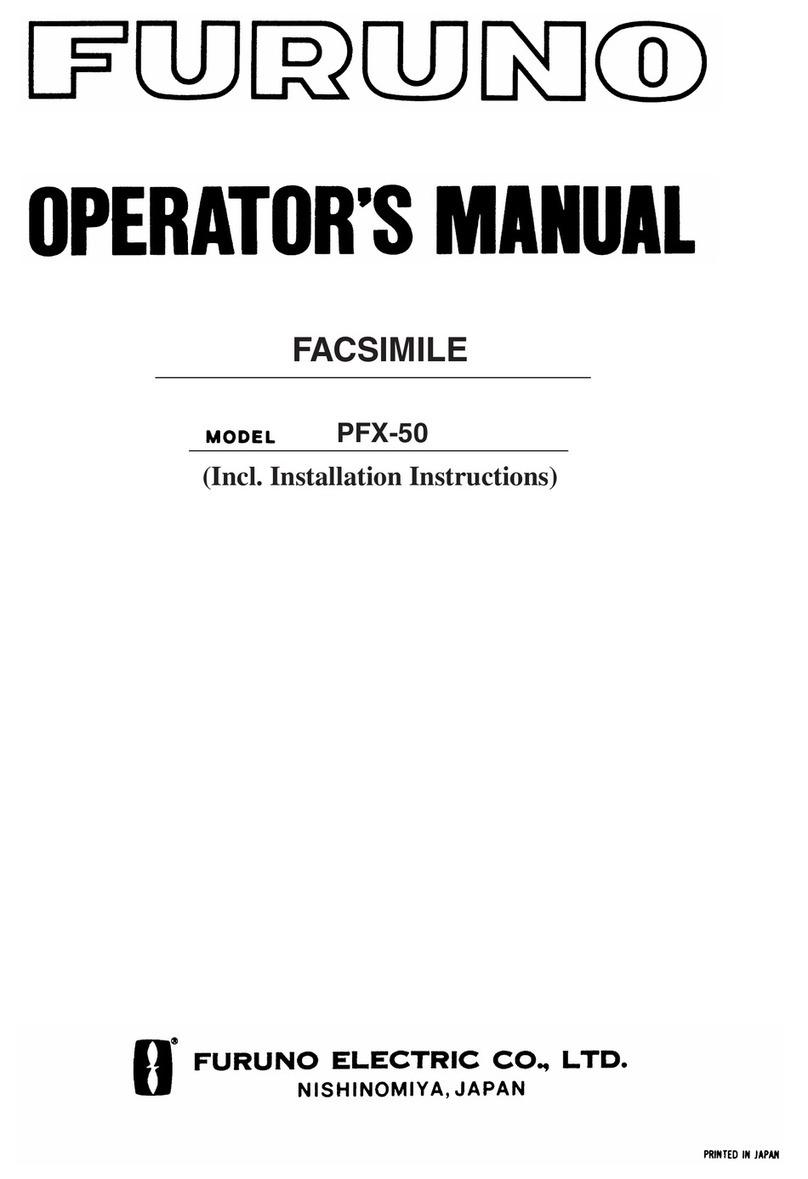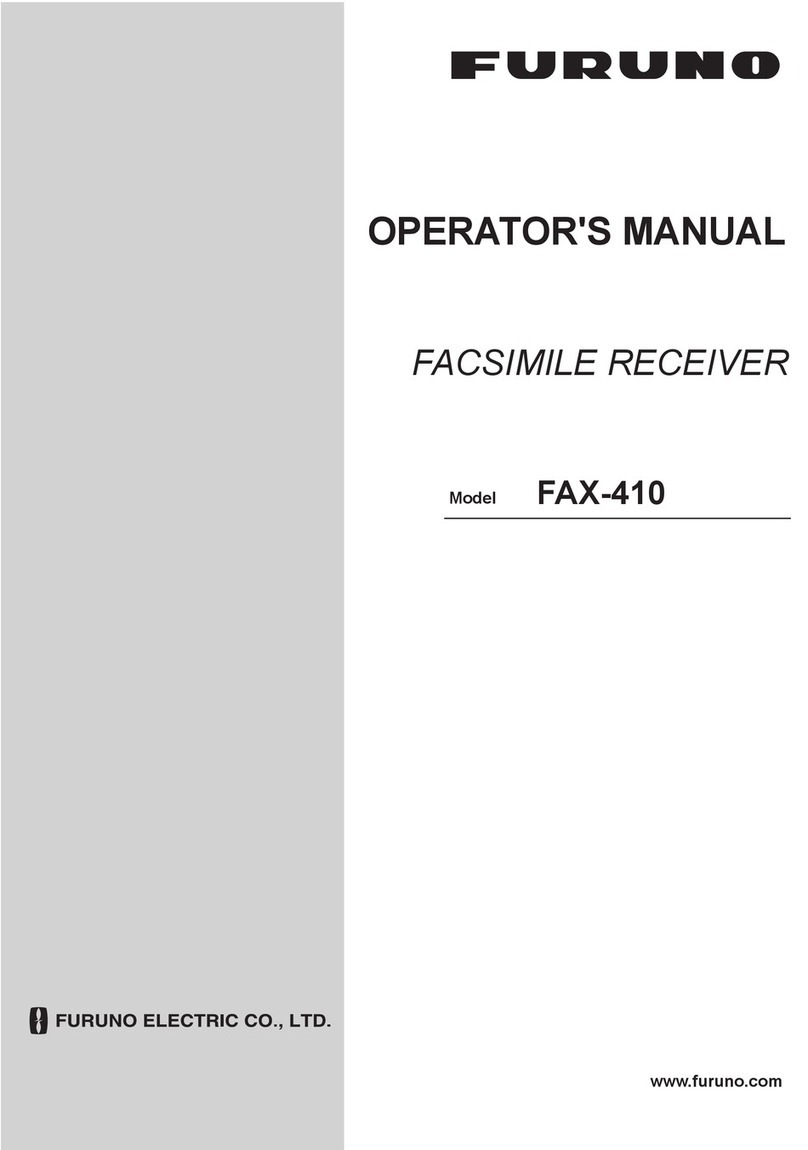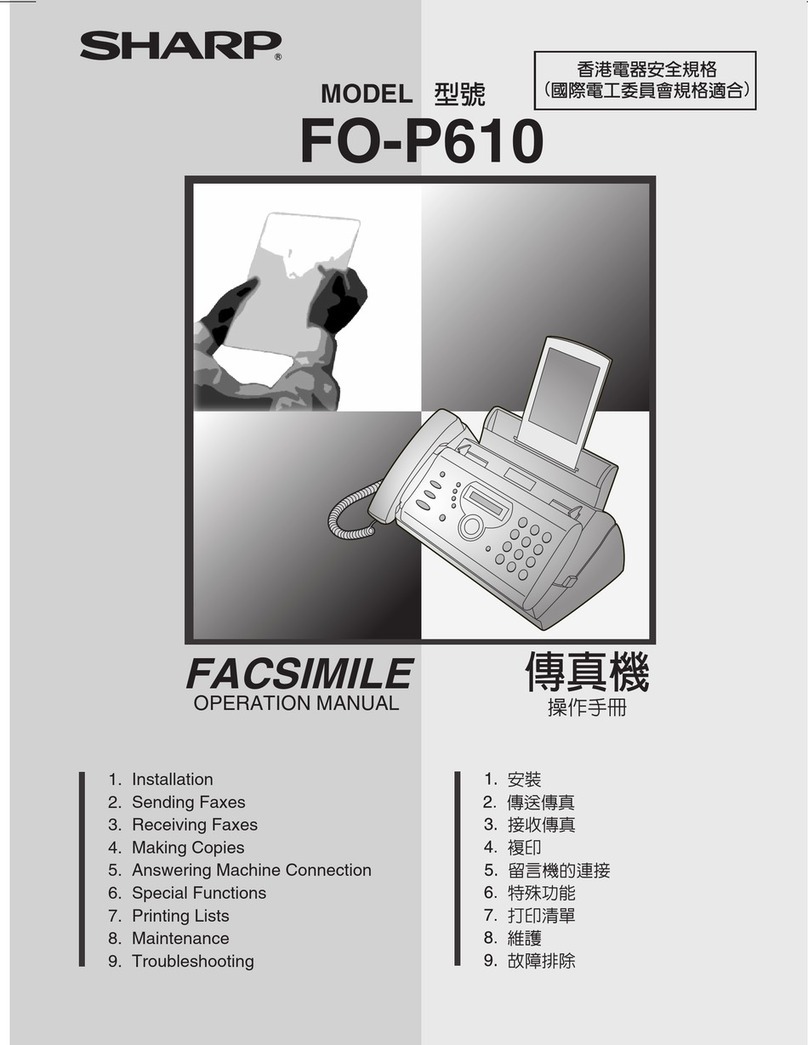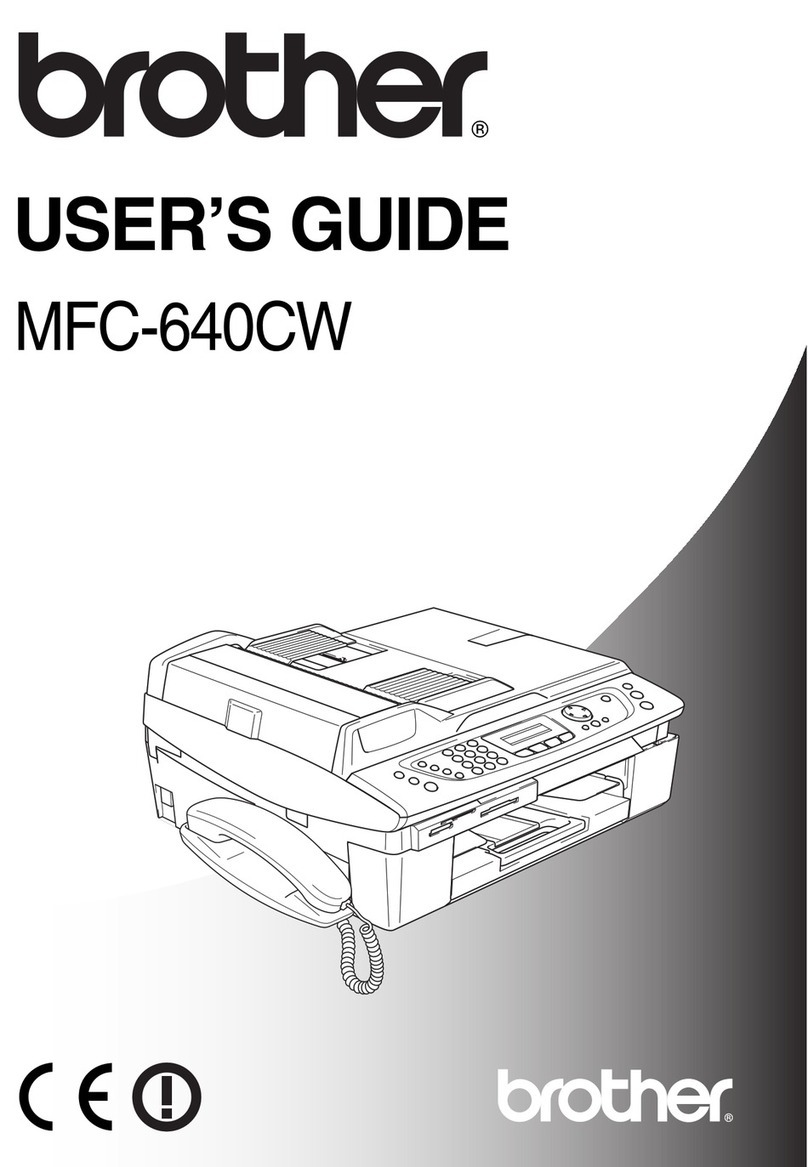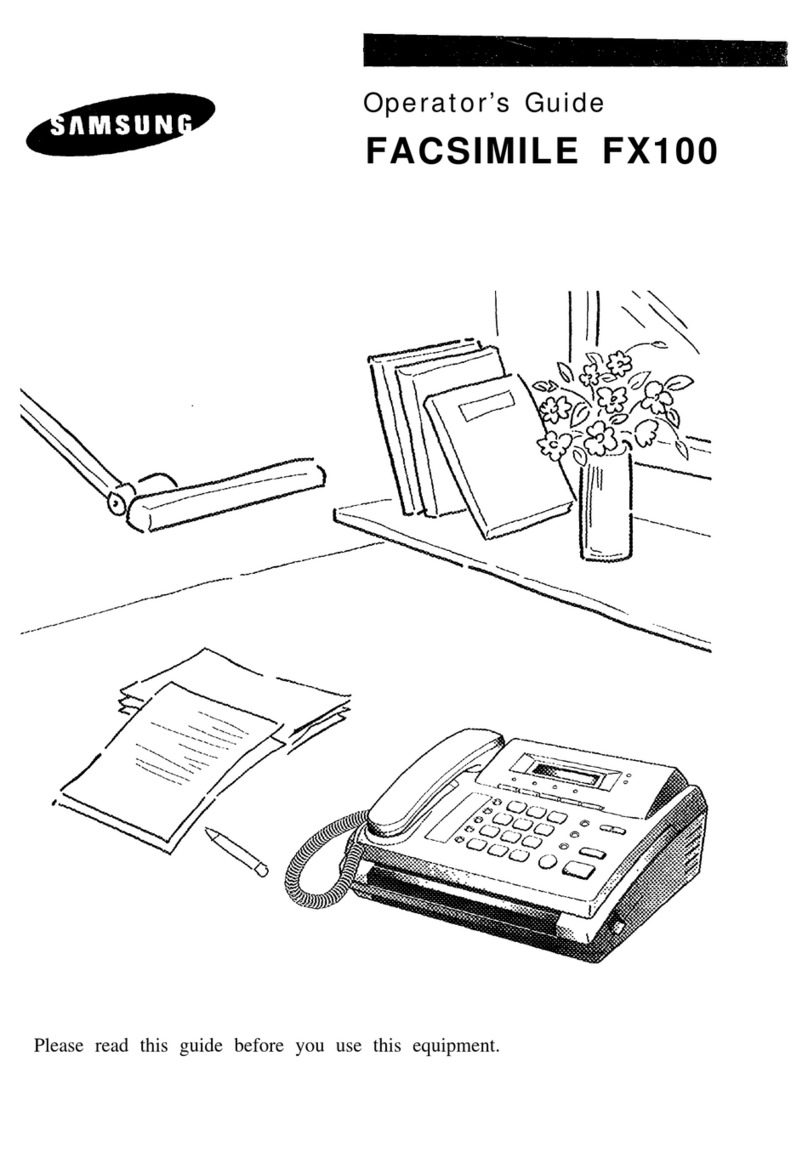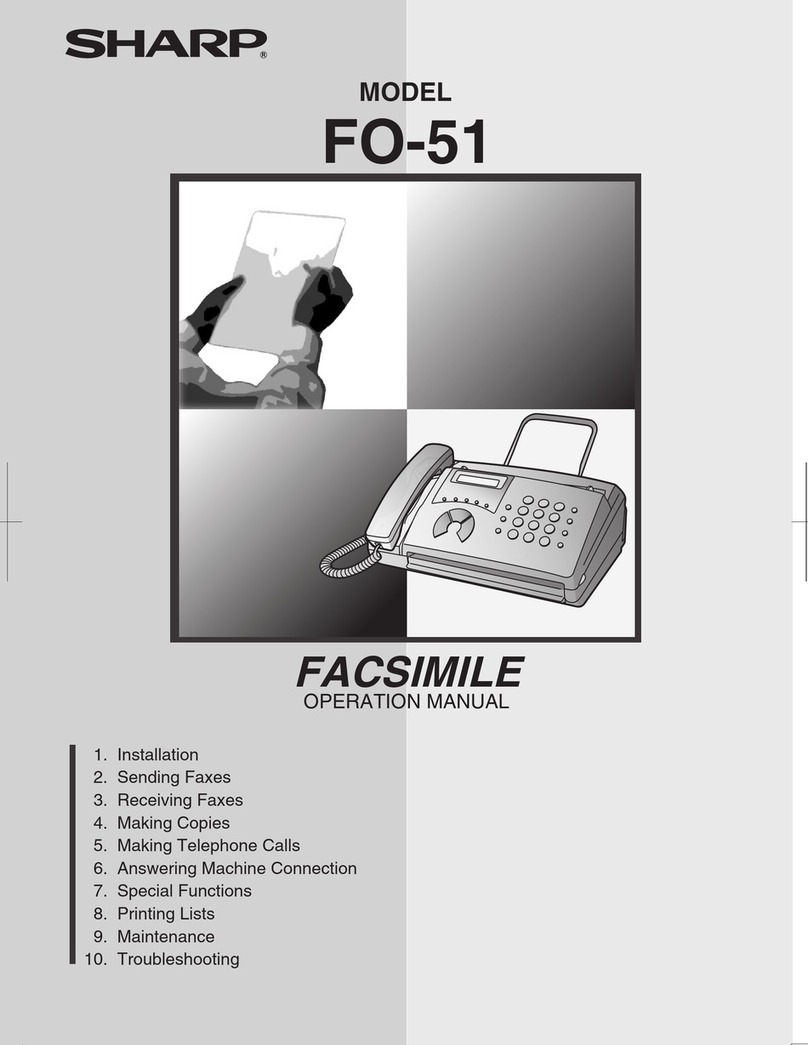
Chapter 1 General
1
FAX-30 is a weather facsimile receiver. The received facsimile image is displayed on the
NavNet display unit and a PC.
1) NAVTEX function is not compliance with IMO standard. (For Non-SOLAS ship)
2) When FAX image is being received, NAVTEX message cannot be received.
3) The PC is required to run a web browser such as NETSCAPE or INTERNET EXPLORER.
4) Automatic station selection mode for NAVTEX reception requires position data from the
GPS.
5) When both the PC and NavNet are connected, FAX-30 is operated from the PC.
6) Receiving priority
(1) In FAX&NAVTEX mode, NAVTEX message is received except for the time set by
the timer.
(2) In FAX&NAVTEX mode, the priority is as follows.
FAX manual reception > FAX timer reception > NAVTEX reception
(3) The auto reception by receiving FAX start signal is valid only in FAX ONLY mode.
